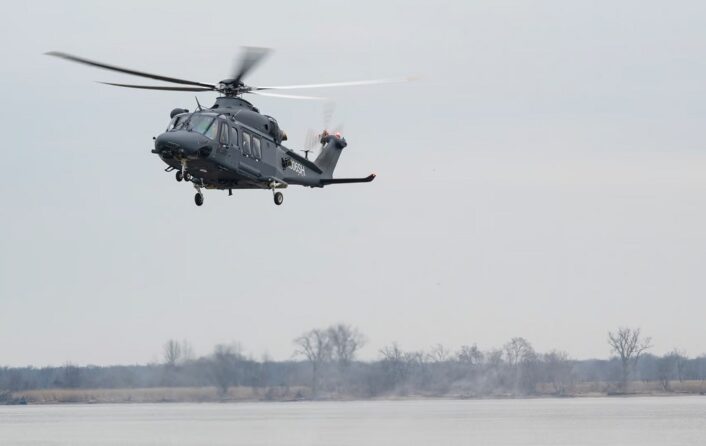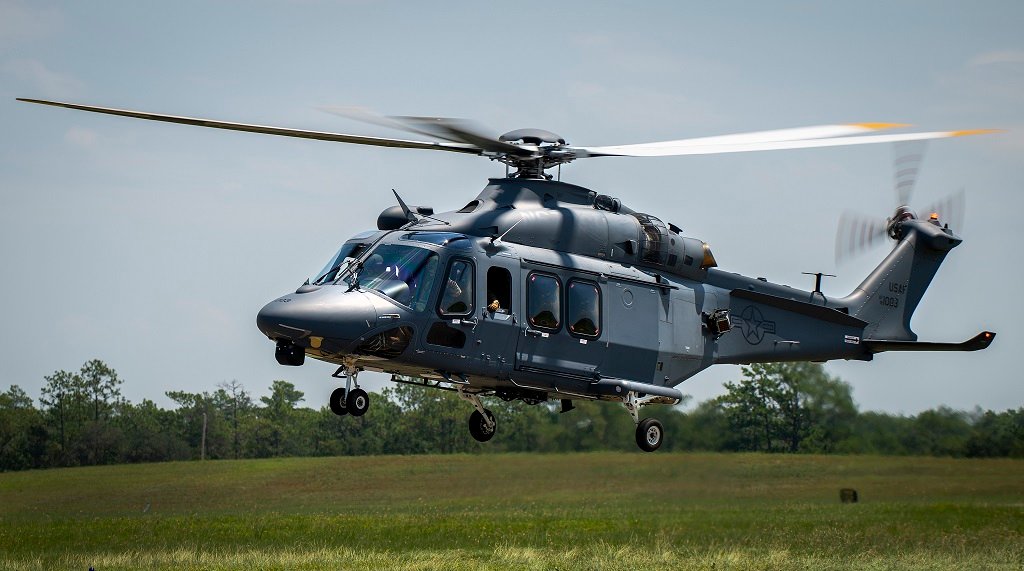[ad_1]

The U.S. Air Force awarded a contract for the Low-Rate Initial Production of 13 helicopters that will be delivered beginning in 2024.
The U.S. Air Force reached the Milestone C decision for the MH-139 Grey Wolf helicopter, awarding Boeing a $285 million contract to begin the Low-Rate Initial Production of 13 helicopters, together with sustainment and support services. The initiation of low-rate production will yield the first operational aircraft set to replace the U.S. Air Force’s current fleet of UH-1N “Huey” helicopters, with first delivery slated for 2024.
“Advancing the program from testing and evaluation to production is a major step toward entering the MH-139 into service and providing the U.S. Air Force with additional missile security for decades,” said Azeem Khan, Boeing’s MH-139 program director. “We are working diligently to begin deliveries next year.”
The Grey Wolf is a multi-mission helicopter based on Leonardo’s proven AW139 helicopter, designed to protect intercontinental ballistic missiles and transport U.S. government officials and security forces. The MH-139A team consists of Boeing, as the prime contractor, and Leonardo as an original equipment manufacturer. Leonardo produces the helicopter at its plant in northeast Philadelphia, while Boeing is responsible for military equipment procurement and installation and post-delivery support of the aircraft.
“My teammates at Leonardo, together with our partners at Boeing, are eager to continue our partnership and are fully committed to ensuring the fleet’s success.” said Clyde Woltman, CEO of Leonardo Helicopters US.

Boeing and Leonardo say that the MH-139A’s enhanced capabilities allow it to accomplish missions more quickly, quietly and efficiently, with a 50 percent increase in speed and range, and an increase of 5,000 pounds max gross weight. The Air Force said previously that the performance of the aircraft show great potential for improving on the myriad of missions that have been covered by the venerable Huey.
The Boeing-Leonardo Team was awarded a $2.4 billion contract in September 2018 for up to 84 helicopters (a number later reduced to 80), training systems and associated support equipment. In August of 2022, the U.S. Air Force accepted the first four helicopters that are now being used for additional developmental and initial operational testing.
Following the delivery of the first four helicopters, the MH-139 finally entered developmental testing, after experiencing unexpected delays because of the integration of defensive systems, an airspeed sensor and the FAA certification. While the commercial AW-139 is already certified by the FAA, the MH-139 conversion needs FAA-approved Supplemental Type Certifications (STCs) for military-specific equipment.
The delays resulted in the delay of the acquisition of eight helicopters financed in the FY2021 budget and the cancellation of the acquisition of eight MH-139s from the FY2022 budget, pushing back the production of the helicopter. In the meanwhile, the helicopter will undergo 15 months of testing to validate the safety of the aircraft and define the limits and maneuvers that can be performed, making sure the MH-139A meets AFGSC requirements for operational missions.
[ad_2]
Source link
